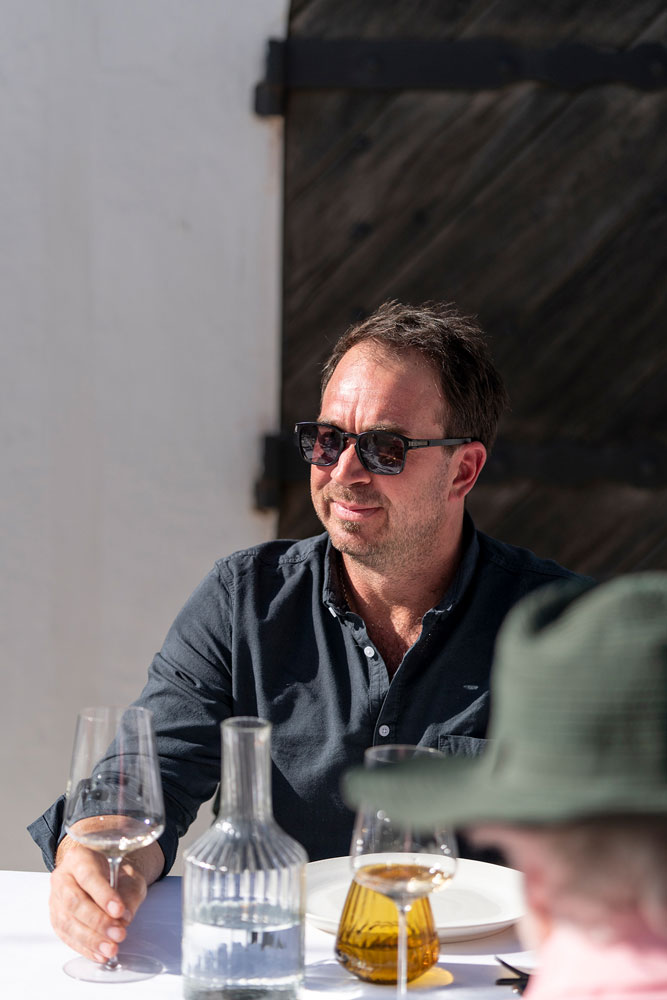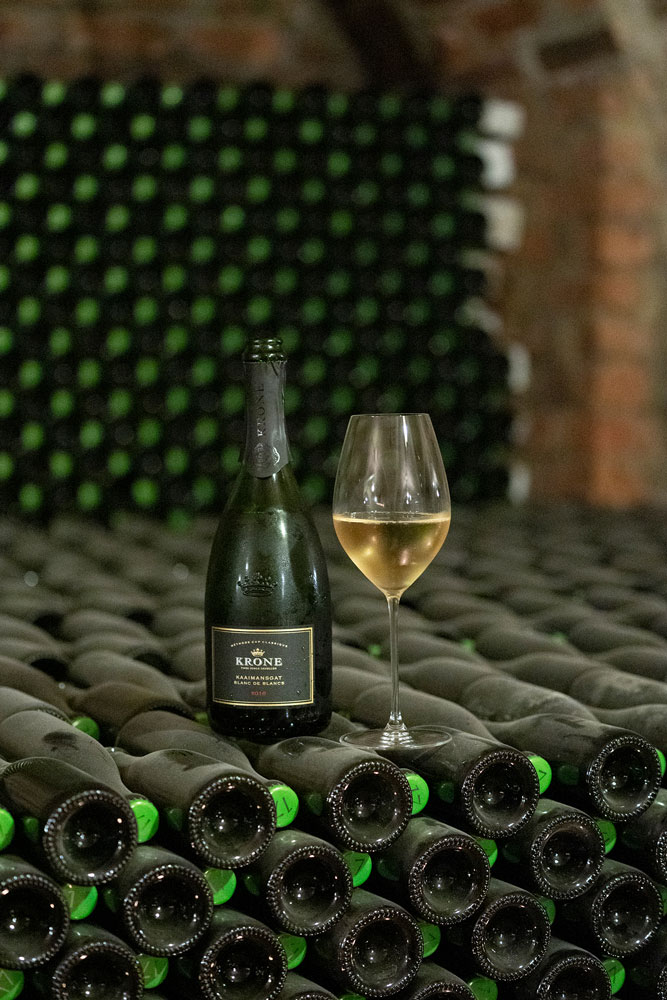Opposite ends of the spectrum
The dictionary definition of the word spectrum states that it’s “a band of colours, as seen in a rainbow, produced by separation of the components of light by their different degrees of refraction according to wavelength” – or: “used to classify something in terms of its position on a scale between two extreme points.”
This past week brought home to me how the South African wine offering fits both the former and the latter. Monday saw Krone launch their premium bubbly, Kaaimansgat Blanc de Blancs at its Tweejongegezellen home in Tulbagh. “It’s been a long time coming,” said Rudiger Gretschel of this bubbly.

Rudiger Gretschel, Vinimark production director
The wine might be from the 2016 vintage but its conceptualisation started years earlier when Vinimark took over the bubbly brand. Gretschel recounted how, sitting in a wine bar in Rheims, he found a book about France’s movement towards grower Champagne. “It was about the movement away from the same style, year after year, towards site specificity and celebrating a unique taste.”
He had a moment tasting Champagne Marie-Courtin: “Precision and purity – like I’ve never tasted!
“And that’s what I wanted to do – to make a ‘grower Champagne’ for South Africa and for Krone.”
It needed a very special site or vineyard and the unique Kaaimansgat provided that. Situated in a special spot in the Elandskloof ward, 700m above Villiersdorp is the 600 hectare valley where mainly fruit is grown. The chardonnay for the Blanc de Blancs is from vines planted on mainly sandstone soils 31 years ago – and which coincidentally also supply Bouchard-Finlayson, Capensis, Lismore and Mullineux & Leeuw. Setting the fruit apart was its vineyard age which Gretschel opined gave it depth and complexity, along with a big diurnal temperature difference that resulted in good acid retention – specifically malic acid.
A special 2 500-litre foudre was ordered from a cooperage in the Alto-Adige in Italy. “The cooper’s attention to detail is meticulous – his ageing and drying of oak at 2000m elevation in the Alps, the selection of the staves from the top, middle or bottom of the stack, his knowledge of what style you are wanting to achieve... all so important to us.”
So the tight grain foudre was used for the whole-bunch pressed cuvée, with the unsettled juice going straight to oak for the natural primary fermentation, left on its gross lees for four months and naturally settled and stabilised over time... before undergoing its secondary fermentation in bottle. And even that was unusual since the yeast it was inoculated with was specially developed by a top German wine biochemist.
“Since this is a bubbly which is made to age I wanted the ferment to use a yeast which produced sulphur dioxide naturally so that none needed to be added for preservation. The ONLY thing which has been added to this wine after 36 months on the lees is the 2 grams per litre dosage, taking its residual sugar to 2.5g.”
The attention to detail is backed up by the wine which is very pure, crisp, tangy with lime citrus and kelpy/oyster shell maritime notes. Very precise and a genuinely thrilling wine to drink.
24 hours later I was taken to the opposite end of the spectrum! I responded to a query from someone on Twitter about Kumala. They wanted a bit of background after being underwhelmed by a Kumala Reserve Chenin Blanc bought at a UK supermarket. Priced at £8 normally, it had been marked down to £6.70. The tweet read: “I found it a real struggle to get anything on the nose. I got excited when the acidity came through on the palate – however, I’m still waiting for the fruit to appeal. It finished flat and dumb. Lacking any Chenin character.’
As happens on Twitter, comments followed, one which stated: “I find all those Kumala wines disappointing. Bulk wine at its worst! It’s what gives South African wine a bad name.” The wine had been shipped in bulk and bottled in Bristol, apparently.
My response was about Kumala being a sensation in the UK market in the early to mid-2000s. Tourists visiting the country would say how much they enjoyed the wine which was seen as South Africa’s most successful export – but it was a mystery to locals who never saw the critter label on local shelves.
Around that time Western Wines, the then brand owner, sort of “reverse engineered” it, introducing it to South Africa and setting up a brand home in Somerset West/Sir Lowry’s Pass which it retains to this day. Not trusting my memory fully, I deep dived into back issues of the Platter Guide and found some interesting history.
The first mention I could find of Kumala was in the 1996 edition where it was a brand belonging to Sonop, a winery in Agter-Paarl/Voor Paardeberg which was part of Jacques Germanier’s stable of Swiss-owned businesses. The 1999 Platter guide notes that it formed part of Germanier’s Savisa holdings (Société Anonyme de Vins Internationaux et Sud Africains), along with the Cape Soleil, Cape Levant, Cilmor, Devon Hill and Kersfontein ranges – and Kumala rated solid 3 stars. “The winemaking approach encourages early drinking, fruit-driven wine styles, distinct varietal differentiation and, where possible, organically approved and certified production,” the intro read.
Fast forward to the 2003 guide where Kumala was no longer part of the Savisa operation but was owned by Western Wines – which had put a lot of marketing effort behind it. In the intervening years Kumala had grown to 1.5 million 12-bottle cases – or 18 million bottles of wine!
“This team have broken – shattered – their own ambitious targets and now ship 1.5-million cases of their Kumala wines to eight countries in Europe and North America (and now also onto Dutch airline KLM’s Business Class decks, after their Chenin-Chardonnay cracked a nod). Which makes Western Wines SA, an awfully large fish in the local pond – and a pretty big cheese in the UK too where Kumala is the top SA brand,” Platter stated.
Since then the brand was acquired by Constellation which then morphed into Accolade Wines, the largest wine company in the world. It remains SA’s biggest brand in the UK market.

Krone’s newly released Kaaimansgat Blanc de Blanc 2016
In 24 hours to experience an almost prismatic dissection of a wine into the many nuanced elements which create a special wine – which the Krone Blanc de Blancs 2016 is – to the other end of the spectrum when wine is a somewhat amorphic commodity missing flavour, identity and soul was startling.
- Fiona McDonald